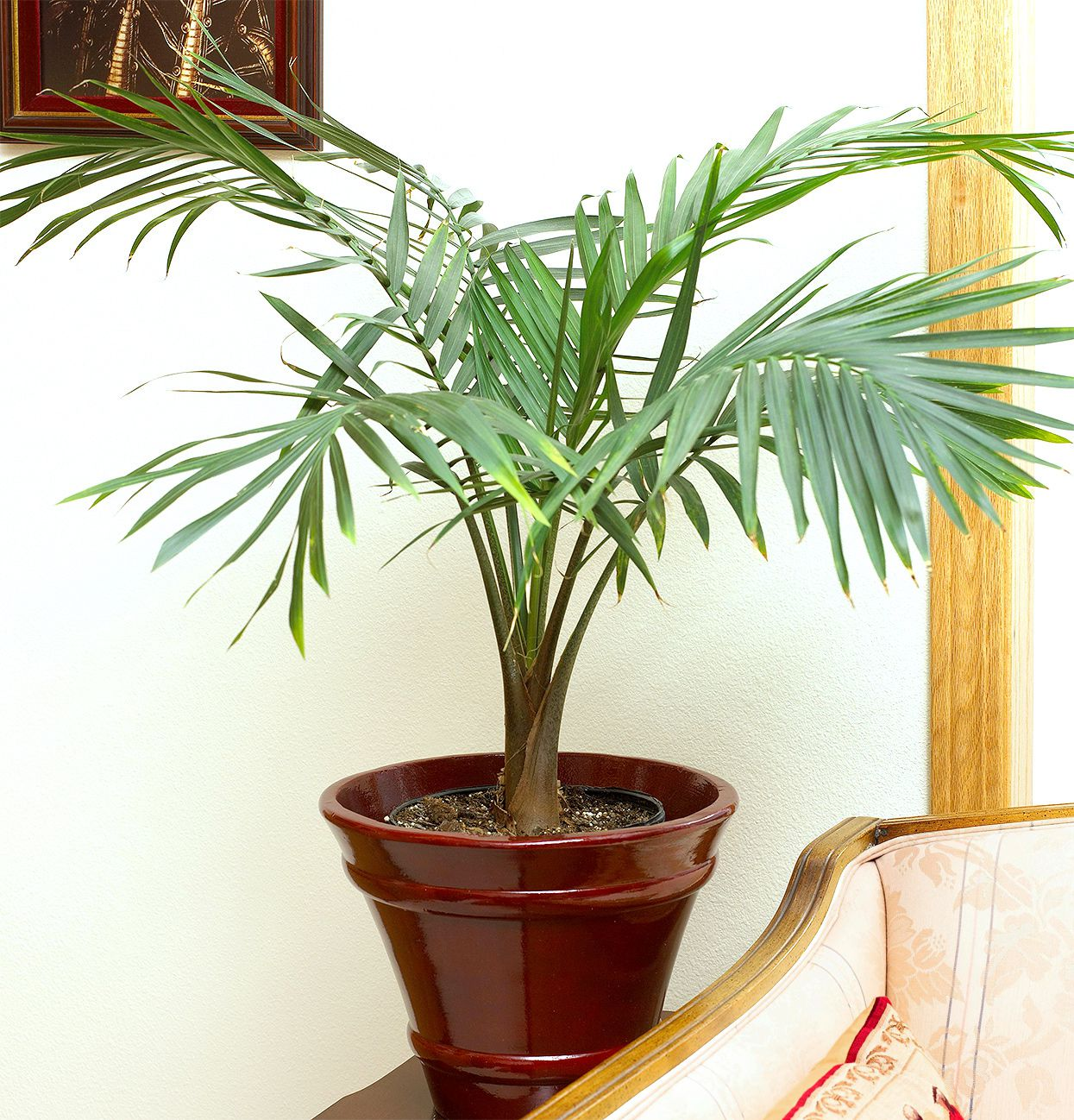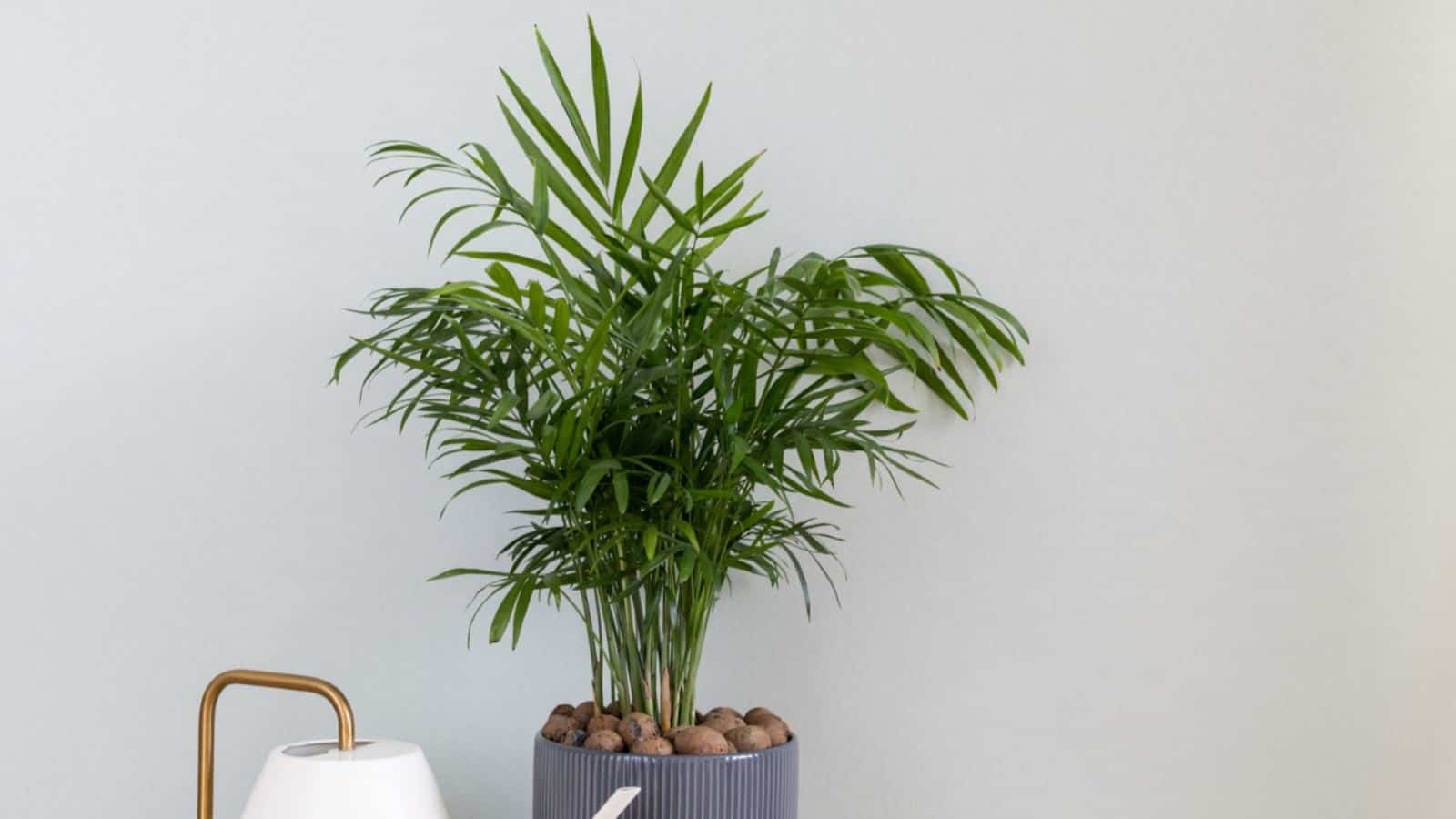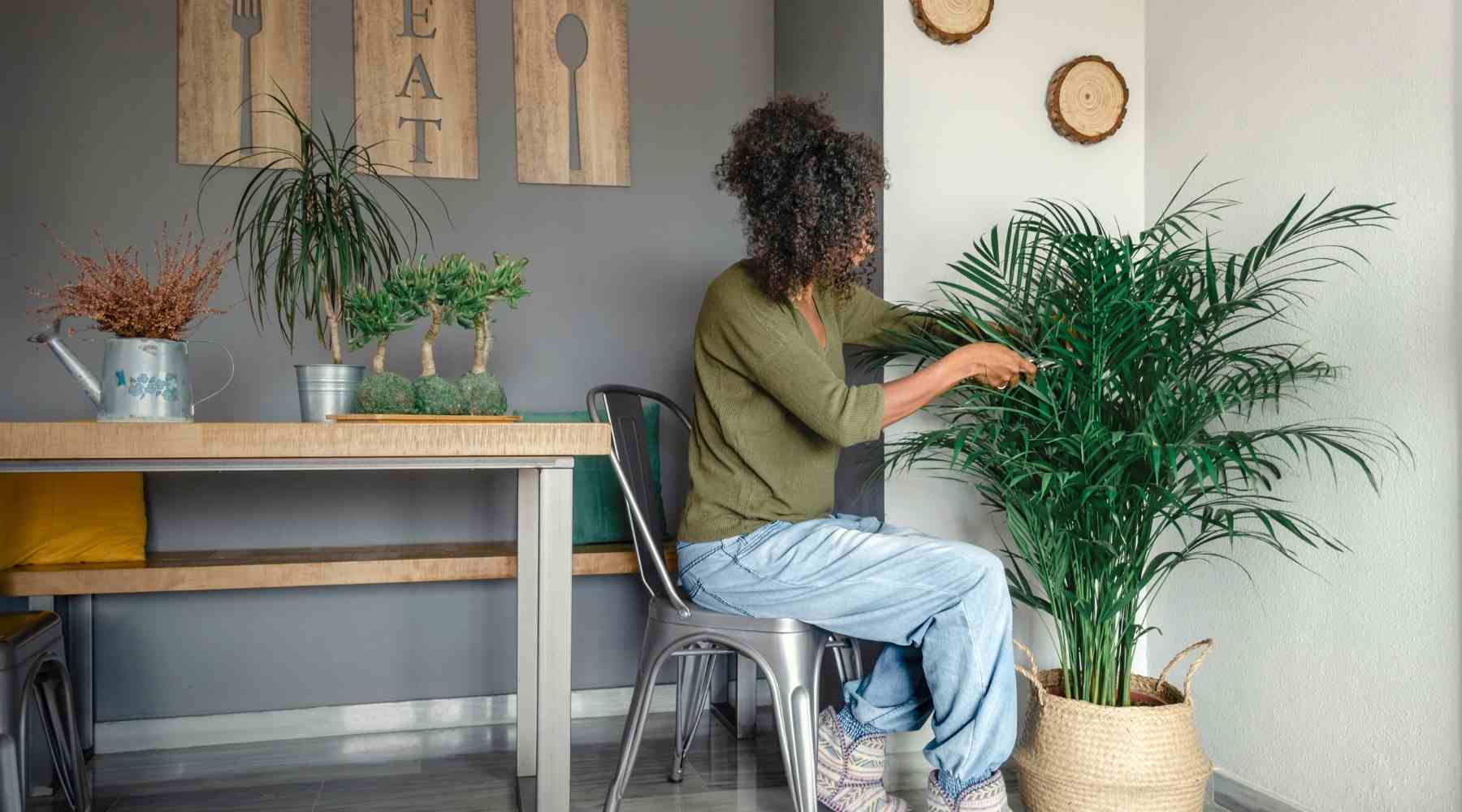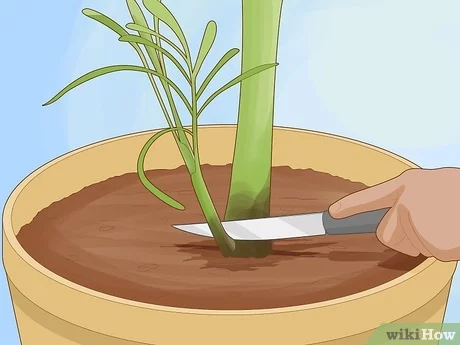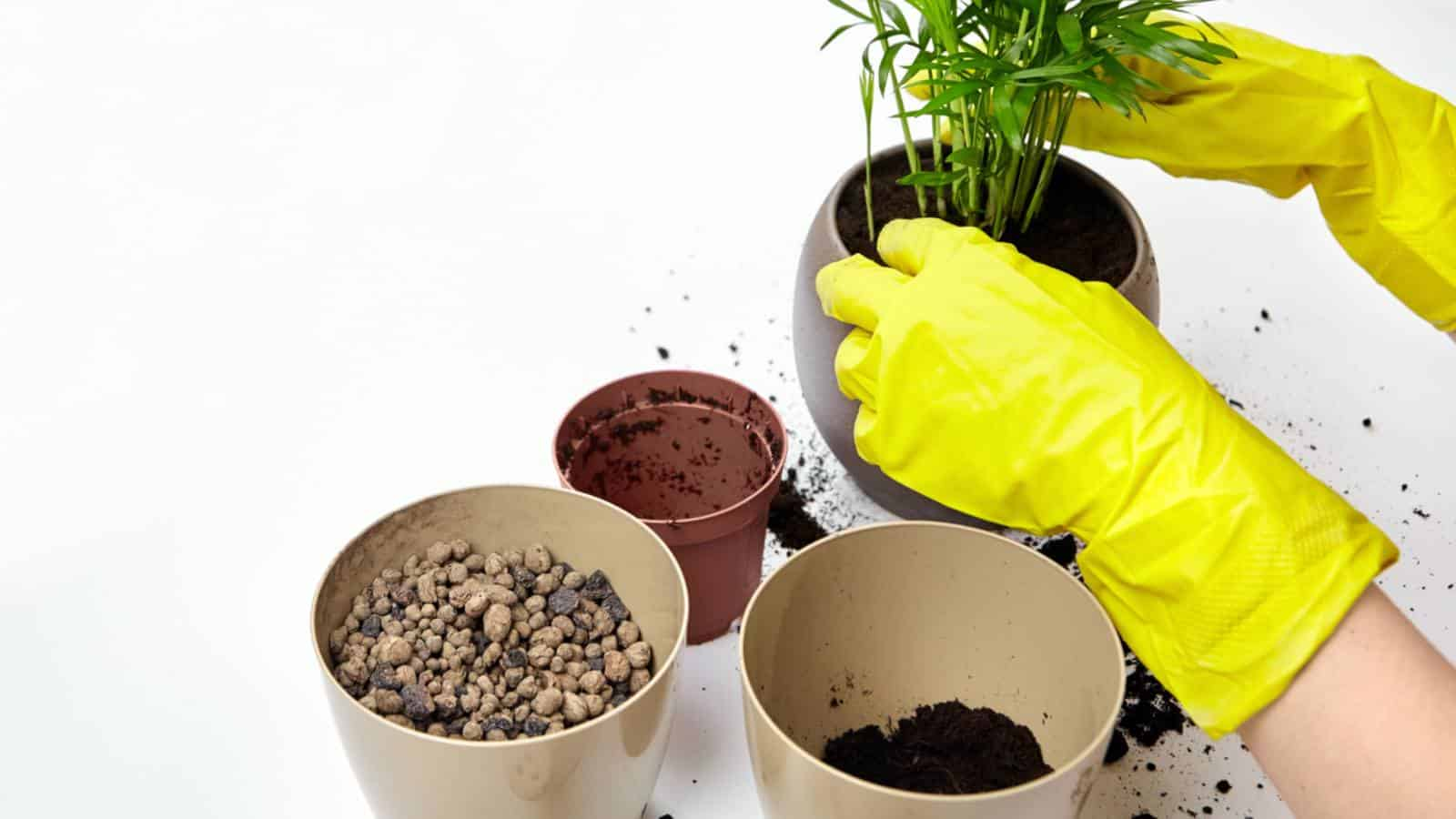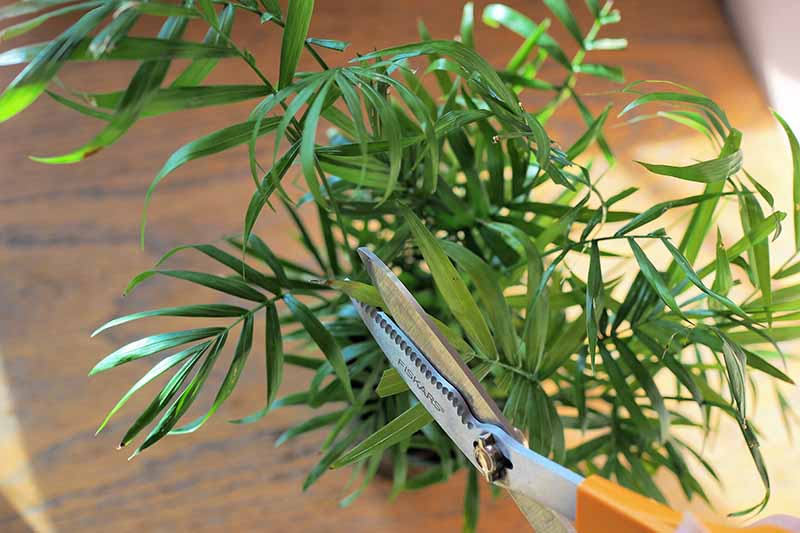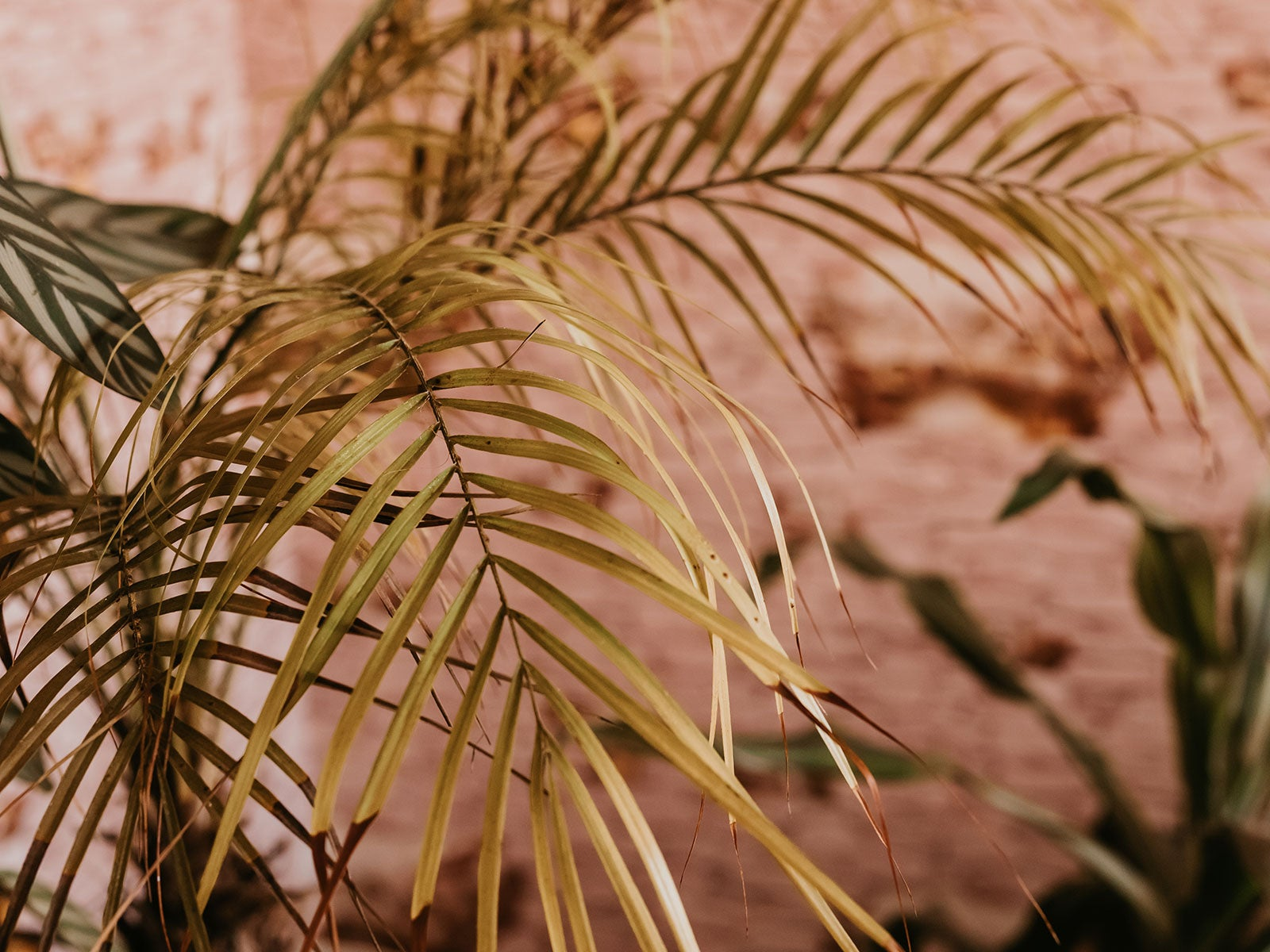HousePlantJoy is supported by our audience. When you purchase through one of our links, we may earn a small affiliate commission. As an Amazon Associate I earn from qualifying purchases. Your cost is not affected.
==================
Hey there! Have you ever wondered how to keep your parlor palm plant thriving and lush? Well, you’re in luck because I have some great tips to share, whether you’re a seasoned plant enthusiast or just starting. Let’s dive in!
Growing and Caring for This Elegant Indoor Plant
Photo by: Better Homes & Gardens
Parlor palms, also known as Chamaedorea elegans, are the ultimate low-maintenance palm plants, perfect for bringing a taste of the tropics indoors. With their slender trunks and cascading, feathery fronds, they exude a laid-back island vibe. Originally from subtropical and tropical regions of the Americas, they became favored indoor plants in the United States.
Compared to many houseplants, they don’t demand much attention, making them a great choice for first-time plant owners and seasoned plant lovers. However, despite being low-maintenance, parlor palms still have specific needs to keep them vibrant and lush in your home. With the right conditions and care, these elegant palm trees can thrive for years, adding a delightful vacation-like atmosphere to your indoor space.
The Stunning Appearance
Photo by: Planet Natural
Let’s chat about the Chamaedorea Palm—a beloved and popular house plant cherished for its elegance and low-maintenance vibes. This slow grower is adored for its lush, feathery fronds and slender trunks that bring a taste of the tropics indoors. Now, let me give you a glimpse of its appearance:
- Overall form: The Parlor Palm boasts a single trunk with a compact and slender growth habit. It typically reaches a mature height of 3 to 4 feet indoors but can grow up to 8 feet tall in ideal conditions.
- Leaves: This plant features lush, deep green foliage with feathery fronds adorned with 6 to 10 pairs of narrow, green leaflets that arch gracefully, giving it a cascading appearance.
- Stems: Sporting slender stems, known as canes, typically in green or brown hues with distinct growth rings.
- Flowers and Fruits: Under optimal conditions, mature parlor palms may produce small clusters of yellow flowers followed by tiny black fruits, though this occurrence is rare when grown indoors.
Parlor palms are renowned for their air-purifying qualities and adaptability to various indoor environments. Their elegant appearance and low-maintenance care make them popular for homes and offices.
Parlor Palm Care
Photo by: Bloombox Club
Caring for your indoor parlor palm is essential to ensure it thrives. Despite its reputation for being low-maintenance, it still requires some attention. Here’s a breakdown of parlor palm care:
Watering
Striking the right balance when watering your parlor palm is key to its health and vitality. Giving your plant too much water can be problematic, possibly resulting in root rot, whereas not watering it enough can leave it dry and struggling.
The secret? Let the soil dry out between waterings to prevent root rot and ensure your parlor palms thrive. To check if watering is required, insert your finger approximately an inch into the soil. If it feels dry, it’s time to hydrate your plant. This simple routine will maintain optimal soil moisture levels and keep your parlor palms happy and thriving.
Temperature and Humidity
Parlor palms thrive in temperatures between 65 Fahrenheit to 80 Fahrenheit (18°C to 27°C). They’re resilient, handling dips to 50°F (10°C) without fuss. But prolonged exposure to cooler temperatures can stress them out, especially if they’re in the path of chilly drafts. So, during the colder months, keep them cozy and away from cold drafts, like those near windows or vents.
Regarding humidity, parlor palms prefer around 50%, but they’re adaptable to the typical humidity levels found in most homes. If you notice brown tips or dry leaf margins, it could be a sign that the humidity levels are too low. Adding extra humidity through misting, using a humidifier, or grouping them with other moisture-loving plants can boost their health. Diagnose the issue carefully before making any changes to your care routine.
Light
Consider their natural habitat when finding the perfect spot for your parlor palms. They thrive under dappled sunlight, which makes bright indirect light the ideal choice for indoor settings. Placing them near an east-facing window offers just the right balance of sunlight. Parlor palms can adapt to different light conditions, including low-light areas.
If you’re thinking of planting your parlor palm outdoors, look for a location with dappled sunlight and well-drained soil. Remember the importance of sun exposure; while they enjoy bright indirect light, they can only handle direct sun shortly. So, choose a spot that offers protection from harsh rays, especially in the afternoon.
Soil and Pot
The right soil mix is crucial for your Parlor Palm, especially if you want to keep it as a low-maintenance plant. It requires a well-draining potting mix to avoid waterlogging and root rot.
Opt for a blend that includes peat moss, sand, and perlite. This combo provides the essential nutrients and ensures excess water can easily escape. Adding a bit of compost to the mix can further improve its structure and give your palm some organic love.
When repotting, opt for a pot equipped with drainage holes to avoid water accumulation at the base, which can harm your plant’s roots. Aim for a neutral soil pH to keep your Parlor Palm happy. With the right soil mix and pot, your palm will thrive effortlessly.
Fertilizer
When your parlor palm grows its lush tropical fronds during the growing season, consider giving it a gentle boost with a weak liquid fertilizer once or twice. These palms are light feeders, so do just what is necessary. And when winter rolls around, give them a break from the feeding routine. Let them relax and enjoy the season without any extra nutrients. Keeping things balanced will keep your palm happy and thriving.
Propagation
Photo by: wikiHow
Here’s how to propagate your parlor palm:
- Find a Good Leaf: Look for a nice, mature green leaf on your parlor palm.
- Cut It Right: Grab some sharp, clean scissors and snip the leaf at an angle where it connects to the main stem.
- Divide It (if You Want): If you’ve got big leaves, you can slice them into smaller sections, ensuring each piece has a little bump where a new leaf can sprout.
- Trim It Down: If you’ve divided the leaf, chop off the lower leaves on each section, leaving just a couple up top.
- Plant It Up: Grab a pot and fill it with some good potting mix that drains well. Give it a little sprinkle of water. Then, stick your leaf stem or section into the soil, making sure those little bumps are slightly buried.
- Get It Cozy: Pop a clear plastic bag over the pot to create a nice, humid home for your new plant. Stick the pot in a warm spot to catch some gentle sunlight.
- Water and Watch: Keep that soil nice and damp, but don’t drown it. Now comes the waiting game – watch for any signs of new growth. It might take a few weeks, so be patient!
- Peel Off the Bag (if You Want): Once you see those fresh leaves popping up, you can slowly remove the plastic bag. This helps your plant get used to a slightly less humid environment.
Potting and Repotting
Photo by: Planet Natural
Let’s chat about repotting your parlor palm – they’re a bit delicate with their weak root systems, so we’ve got to handle them with care.
When it’s time for a new pot, just go up by a slightly larger one—about 2 or 3 inches wider than the current one. We don’t want to stress those roots out with too much space.
Check on your parlor palm now and then to see if it’s feeling rootbound. Lift the plant from its pot to peek at those roots and ensure they’re not sneaking out of the bottom.
When needed, gently move your parlor palm to its new, attractive pots. Add a layer of soil, then carefully tease apart the roots before lowering it in. Fill in the gaps with more soil, gently tamping it down to secure the plant.
If your parlor palm feels shaky, you can stake it to keep it steady. Give it a good drink immediately and find a bright, warm spot to settle into. With a little love and attention, your parlor palm will thrive in its new digs!
Pruning
Photo by: Gardener’s Path
If you spot any dried, browned, or yellowing leaves on your parlor palm, giving them a trim is fine. However, it’s best to resist the urge when it comes to pruning beyond that. Over-pruning can stunt its growth and isn’t necessary for this type of palm tree. So, feel free to tidy up those yellowing leaves, but let your parlor palm grow naturally!
Common Problems with Parlor Palms
Photo by: Gardening Know How
Here are some common problems with parlor palm plants and how to solve them:
Yellowing Leaves
This could happen because you’re giving it too much water; it needs more light or key nutrients.
Solution: Water it when the top inch of soil feels dry. If it seems droopy, move it to a brighter spot – plants love some good sunshine! And once a month during its active growing season, give it a little boost with diluted fertilizer.
Pests
Parlor palms are sometimes prone to dealing with mealybugs, scale, and spider mites.
Solution: You can treat the plant with insecticidal soap or neem oil.
Browning Leaves
This could occur due to inadequate watering, overwatering, or insufficient humidity for your palm.
Solution: Only water the plant when the top inch of the soil feels dry. To keep its leaves happy, give them a regular misting or set up a humidifier nearby to boost humidity levels.
Diseases
Parlor palms can sometimes be prone to fungal diseases like root rot.
Solution: If you notice any infected leaves, it’s best to remove them and then treat the plant with a fungicide.
Tropical Oasis in Your Indoor Space
Maintaining the health and vitality of your parlor palm is achievable with adequate care and attention. This includes ensuring optimal lighting, temperature, watering, and soil conditions. Keep an eye out for common problems such as yellowing or browning leaves, pests, and diseases, and tackle them promptly to keep your palm in prime condition. With some nurturing, your parlor palm will thrive, providing lush, vibrant foliage and bringing a tropical atmosphere to your indoor space for years to come!
FAQs
Is the Bamboo Palm a Relative of the Parlor Palm?
The bamboo palm (chamaedorea seifrizii) is a cousin of the parlor palm (chamaedorea elegans). They’re part of the same plant family, chamaedorea, within the larger Arecaceae family, home to all true palms.
Can Parlor Palm Live in Artificial Light?
While parlor palms prefer natural, indirect sunlight, they can survive under artificial light pretty well, too. But here’s the scoop—their growth and health might suffer a bit compared to soaking up that sweet, natural sunlight.
Why Should You Join Us?
Get insider secrets: Unearth the best-kept tips to keep your plants thriving and blooming like never before.
Expert advice: Gain access to our team on Facebook, Twitter, and other social media channels, and meet our gardening experts eager to help you on your plant journey.
Engage with like-minded souls: Connect with fellow plant lovers, exchange stories, and build a supportive community. Join us today! Follow Houseplant Joy on Facebook, Instagram, and Twitter for daily inspiration and a blooming good time! #HouseplantJoy #GreenThumbsUnite #HouseplantLove


